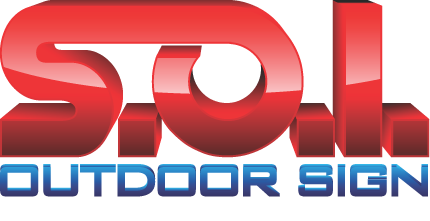Custom Sign Defined
Custom Sign Defined
Mar 23Custom Sign Defined
Nowadays, it’s important for a company to have an easy – realising sign so that its message to its audiences can spread as wide as possible. That’s the reason of the birth of bespoke signs.
For most land-based companies, bespoke signs are one of the most important ways of getting their organisation head and shoulders above their competitors, especially in a busy street. Because, of course, the main point about bespoke signs is that they are a one off. Especially if a new company is establishing itself, these kinds of signs are hugely important.
A contemporary custom sign can do an awful lot of hard work on on behalf of your business, and it is amazing just how much it can contribute to the way your organisation is perceived, and to the building up of a strong company. Custom signs are tailored to individual companies budgets also – another benefit if you do not have a huge amount to invest.
They are increasingly used in a wide range of settings, including shops and window signs, banners at trade shows, display banners, building signs, advertising and commercial signs. Its vital that you choose a sign maker interested in doing more than a ‘rush job’ and completing the work as rapidly as possible. The best sign makers take real pride in their work, and the time to discuss the individual needs of their clients. There is a huge amount of expertise involved in creating the perfect custom sign, including engineering, mathematical and creative skills.
While it might be tempting to think you can create a bespoke sign yourself, the reality is that without the right training, you’ll definitely struggle. Equally, if you’re considering having custom signage, consider precisely what you want to say with it, and how that message will be conveyed. Like so much else, when it comes to custom made signs, the devil is in the detail. You’ll need to think about what colour to have, and consider what images, if any, you’d like on the sign. The typeface you use also plays an important part in the finished sign; neglect this aspect at your peril. While it could seem tempting to go for bold or capital letters, overdoing either can tire the readers eye, so treat this with caution. Another thing to steer clear of is curved, scrolled script. This will look great on a gilt-edged invitation card, but isn’t clear enough for a sign which needs to be understood immediately. With literally hundreds of typefaces to choose from, the choice can feel bewildering. But, essentially, typefaces can be divided into a few broad categories, including whimsical, child-like, classic, professional or retro. The choice will be dependent upon the feel of your particular business For many professional sign makers, sans serif fonts are the they choose. While a serif style adds little lines to the tops and tails of letters, sans serif fonts do not, which makes your sign much easier to read.
